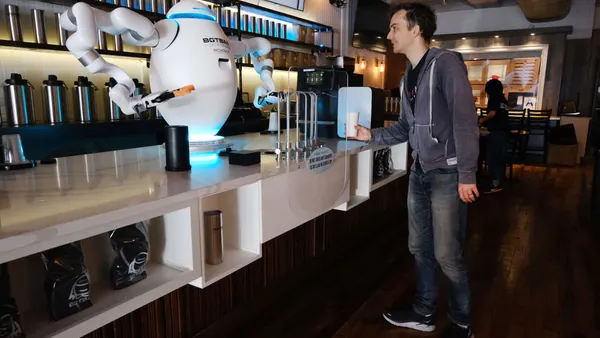As burnout and stress remain a constant in American workplaces, it’s time for business leaders to rethink their approach to employee wellbeing. Of employees whose wellbeing was suffering, a recent Gallup poll found that 75% were feeling underappreciated and considered leaving their job. So how can we ensure that employees feel content, productive, and valued? According to our recent Economic Value Study, which explores the definitive link between employee engagement and business success, the power lies in appreciation.
The benefits of appreciation:
When a company emphasizes a focus on appreciation, the benefits are tangible. Research from OnePoll shares that appreciated employees are 10 times more likely to feel that they belong. The HAAS School of Business Research also found that recognized employees are 23% more productive, with those who are appreciated and valued being 43% more effective in their roles, showing better overall performance.
With a true culture of appreciation, the result is a highly engaged workforce, which in turn, translates into tangible business success. Recent research we conducted highlighted that investing in employee engagement isn’t just the right thing to do for your people, but a business essential. When collecting data from over 300 organizations across Australia, the U.S., the UK, and the EU, we found that the correlation between business performance and employee engagement scores is nearly linear.
Below are a few ways that HR can incorporate appreciation into the workplace DNA, as well was what to avoid:
Do:
Incorporate Emotional Intelligence (EQ) assessments. Incorporating EQ assessments, including self-assessments and the ability to gather feedback, provides an opportunity for leadership to gain self-awareness to realize what works and what doesn’t. In turn, organizations are able to lead with empathy, effective communication, active listening, flexibility and understanding, creating a trusting and authentic work environment.
Revisit benefit offerings. Considering Maslow’s Hierarchy of Needs, alternative or nontraditional benefits are a great resource for meeting employees’ needs. HR leadership should ask themselves: what are employees attracted to in a company/role? Where do people want to stay? How do they want to build and grow their careers? And finally, how can we help? With this insight in mind, reassess your company’s benefits and tailor the offerings to what your people really want.
Give appreciation a seat at the boardroom table. For your appreciation strategy to succeed, you’ll need leadership’s buy-in, and it’s important for HR to have a spot within an organization’s C-Suite. Designating an existing company leader as a Chief Appreciation Officer, who can serve as an advocate for developing a tactical people-focused strategy, can help drive home the business benefits of having appreciation as a top priority. To further enhance appreciation as a critical component of our business, Reward Gateway’s first Chief Appreciation Officer role was given to Nebel Crowhurst, Chief People Officer.
Don’t:
Confuse appreciation for recognition. While recognition is important and should be shown often and consistently, appreciation is what makes an employee feel truly valued outside of their achievements and contributions. Recognition is about what people do, while appreciation is about who they are. Done right, true appreciation brings a greater sense of belonging and helps employees feel aligned with a company’s mission.
Neglect employees’ full spectrum of needs. As mentioned above with Maslow’s Hierarchy of Needs, a person cannot feel valued unless all other needs are met. Level by level, these include physiological needs (discounts or benefits), safety and security needs (physical, mental, nutritional and financial wellbeing), love and belonging needs (communication, culture and communication), self-esteem needs (learning and development, recognition and incentives). Cumulatively, employees will feel true appreciation and fulfill their self-actualization needs if these aren’t ignored.
Be reactive. For an organization’s appreciation efforts to make an impact, we must shift away from traditional HR methods and take a more proactive strategy. Even with a “people-first” approach, many HR initiatives are still stuck in transactional practices. It’s time to build a more authentic, proactive work environment.
At the end of the day, it’s not enough to just tell employees they are appreciated. To be successful in this effort, they must feel it. This comes from the top-down, and HR strategy has a role to play in every organization’s leadership team.










